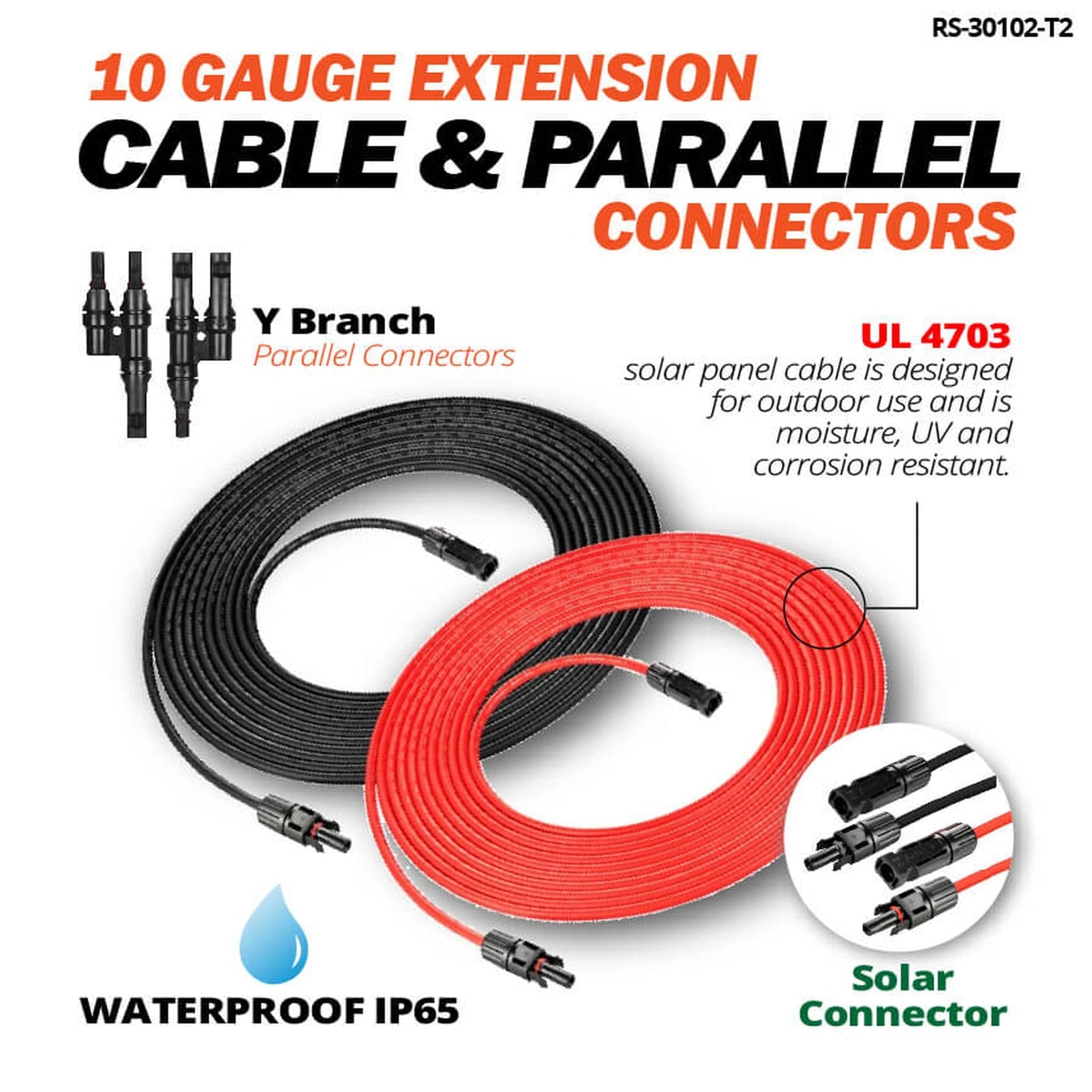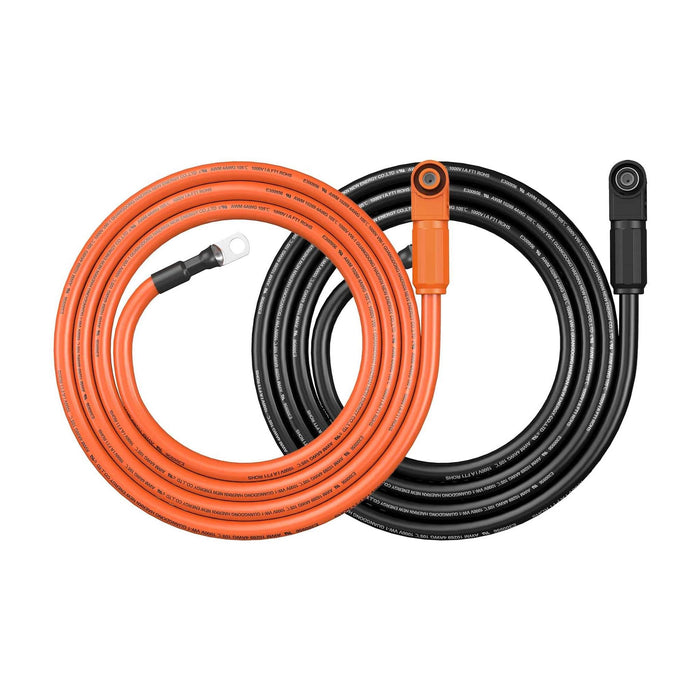GOT A QUESTION? CALL US: 571-350-0146
Call Our Experts Today!
(571) 350-0146
info@solarguyspro.com
Mon-Sun: 9am-7pm EST
GOT A QUESTION? CALL US: 571-350-0146
Call Our Experts Today!
(571) 350-0146
info@solarguyspro.com
Mon-Sun: 9am-7pm EST

Choosing the right wire size is one of the most important steps when setting up any electrical or solar system. The wrong wire gauge can lead to voltage drop, overheating, or even damage to your equipment. That’s why having a Low Voltage Wire Gauge Chart is essential — it helps you match the correct wire size to your system’s current, distance, and voltage requirements.
At SolarGuysPro.com, we help solar enthusiasts, RV owners, and off-grid homeowners find reliable wiring solutions that deliver safe and efficient power. In this guide, we’ll walk you through everything you need to know about low-voltage wires, how to read a wire gauge chart, and how to pick the right wire for your solar or electrical setup.

A low-voltage wire is used to transmit electricity at voltages below the standard household level (typically below 50 volts). These wires are found in many everyday systems, including:
Solar power systems (DC wiring from panels to controllers and batteries)
RV and marine power setups
Landscape lighting and LED strips
Security systems and doorbells
Audio, communication, and networking lines
Unlike standard 120V or 240V household circuits, low-voltage systems are safer to handle and more energy-efficient. However, because the voltage is lower, wire gauge becomes even more important. Low voltage means you’ll need thicker wires to carry the same amount of current over long distances — otherwise, you risk excessive voltage drop, where energy is lost as heat.
Wire gauge refers to the thickness of the wire, typically measured using the American Wire Gauge (AWG) standard. The smaller the AWG number, the thicker the wire.
For example:
10 AWG wire is thicker than 16 AWG wire.
Thicker wires carry more current and experience less voltage drop over distance.
In low-voltage systems such as 12V or 24V solar setups, even a small voltage drop can cause performance loss. For instance, a drop from 12V to 10.5V may cause an inverter or charge controller to malfunction. Using the proper wire gauge ensures maximum power efficiency and system safety.
A Low Voltage Wire Gauge Chart is a reference tool that helps you choose the correct wire size based on three key factors:
Voltage (V) – The system voltage, often 12V, 24V, or 48V for solar applications.
Current (A) – The amount of electrical current your system carries.
Distance (ft) – How far electricity needs to travel from the power source to the load.
The chart prevents you from undersizing your wires. It ensures that your cables can safely handle the required current without overheating or losing voltage along the way.
Find your system voltage (e.g., 12V or 24V).
Determine your current draw (in amps).
Measure the distance between your power source and appliance (round trip).
Cross-reference these values to find the correct AWG wire size.
The higher the current or longer the wire run, the thicker your wire must be.
The table below shows an example of a 12V Low Voltage Wire Gauge Chart, commonly used in solar panel setups, RV systems, and marine applications.
| Distance (Feet) | 5A (60W) | 10A (120W) | 15A (180W) | 20A (240W) | 25A (300W) | 30A (360W) | 40A (480W) | 50A (600W) | 60A (720W) |
|---|---|---|---|---|---|---|---|---|---|
| 15 ft | 16 AWG | 12 AWG | 10 AWG | 10 AWG | 8 AWG | 8 AWG | 6 AWG | 6 AWG | 4 AWG |
| 20 ft | 14 AWG | 12 AWG | 10 AWG | 8 AWG | 8 AWG | 6 AWG | 6 AWG | 4 AWG | 4 AWG |
| 25 ft | 14 AWG | 10 AWG | 8 AWG | 8 AWG | 6 AWG | 6 AWG | 4 AWG | 4 AWG | 2 AWG |
| 30 ft | 12 AWG | 10 AWG | 8 AWG | 6 AWG | 6 AWG | 4 AWG | 4 AWG | 2 AWG | 2 AWG |
| 40 ft | 12 AWG | 8 AWG | 6 AWG | 6 AWG | 4 AWG | 4 AWG | 2 AWG | 2 AWG | 1 AWG |
| 50 ft | 10 AWG | 8 AWG | 6 AWG | 4 AWG | 4 AWG | 2 AWG | 2 AWG | 1 AWG | 1/0 AWG |
| 60 ft | 10 AWG | 6 AWG | 6 AWG | 4 AWG | 2 AWG | 2 AWG | 1 AWG | 1/0 AWG | 2/0 AWG |
| 70 ft | 10 AWG | 6 AWG | 4 AWG | 2 AWG | 2 AWG | 2 AWG | 1/0 AWG | 2/0 AWG | 2/0 AWG |
| 80 ft | 8 AWG | 6 AWG | 4 AWG | 2 AWG | 2 AWG | 1 AWG | 1/0 AWG | 2/0 AWG | 3/0 AWG |
Let’s say you’re wiring a solar panel system that draws 20 amps at 12V over 30 feet. According to the chart, you’ll need 6 AWG wire to safely carry that current. Using a smaller wire, such as 10 AWG, could result in excessive voltage drop, reduced efficiency, or even melted insulation over time.
Voltage drop occurs when current travels through a wire and loses voltage due to electrical resistance. The longer the wire or the smaller its diameter, the more voltage you lose.
Here’s why minimizing voltage drop matters:
Efficiency: Less voltage drop means more power reaches your equipment.
Safety: High resistance generates heat, which can cause wire insulation to melt.
Performance: Prevents flickering lights, inverter shutdowns, or poor battery charging.
To keep your system efficient, aim for a voltage drop below 3% for most low-voltage applications. For critical systems like solar or battery banks, staying under 2% is ideal.
In solar energy systems, low-voltage wiring plays a critical role in connecting:
Solar panels to charge controllers
Charge controllers to batteries
Batteries to inverters
These are typically 12V, 24V, or 48V DC circuits, and selecting the right wire gauge ensures your energy travels safely and efficiently.
At SolarGuysPro.com, you’ll find a wide selection of solar-rated wires, connectors, and accessories designed for off-grid, RV, and home solar installations. Our wiring solutions are UV-resistant, flexible, and high-temperature rated, making them perfect for both outdoor and indoor use.

Beyond gauge, wire material and insulation type are also crucial for performance and safety.
Copper wires are the best choice for low-voltage systems because of their superior conductivity and resistance to corrosion.
Aluminum wires are lighter and cheaper but have higher resistance, which means you’ll need a thicker gauge for the same current capacity.
Look for wires rated for outdoor and solar use — such as PV Wire, THHN, or USE-2 — to handle heat, UV exposure, and moisture. These are essential for solar panel setups and off-grid systems.
Stranded wire is more flexible and ideal for mobile or RV applications.
Solid wire is more rigid and suitable for permanent installations.
Let’s say you’re wiring a 400W solar system at 12V, producing about 33 amps of current. The distance between your solar panels and charge controller is 25 feet (one-way).
Using the Low Voltage Wire Gauge Chart, a 6 AWG copper wire would be the correct choice to minimize voltage drop and handle the current safely.
If you extend that distance to 50 feet, you’ll need to upgrade to 4 AWG wire to maintain system efficiency. This simple adjustment can prevent power loss and keep your batteries charging efficiently — saving energy and money long-term.
Even with a chart, there are some common pitfalls beginners make when working with low-voltage wiring:
Ignoring round-trip distance – Always double the distance when calculating voltage drop.
Mixing wire materials – Avoid connecting aluminum and copper wires without proper connectors.
Skipping fuse protection – Always include a fuse or circuit breaker sized for your wire’s ampacity.
Underestimating future upgrades – If you plan to expand your solar system, choose a slightly thicker wire now.
Avoiding these mistakes ensures your wiring is safe, efficient, and future-ready.

At SolarGuysPro.com, we carry premium low-voltage and solar-rated wires perfect for any electrical setup. Whether you’re wiring an RV solar kit, powering a home backup system, or setting up an off-grid cabin, we’ve got everything you need:
High-quality PV Wire and MC4 connectors
Pure copper solar cables for 12V–48V systems
Pre-assembled solar kits with properly sized wiring included
Accessories and fuses for complete safety and performance
Our team can also guide you in selecting the correct wire size and compatible components — so your installation runs smoothly from start to finish.
A Low Voltage Wire Gauge Chart is an essential resource for anyone working with solar, RV, or off-grid electrical systems. It helps you select the right wire size, prevent power loss, and ensure your setup runs safely and efficiently.
By understanding current, voltage, and distance — and using the right wire gauge — you’ll protect your system from voltage drop, overheating, and costly damage.
Ready to get started? Visit SolarGuysPro.com today to shop premium low-voltage wires, solar cables, and complete installation kits built for long-lasting performance.
Choose the right wire, power smarter, and make your system safer — all with the help of your Low Voltage Wire Gauge Chart.
Leave a comment